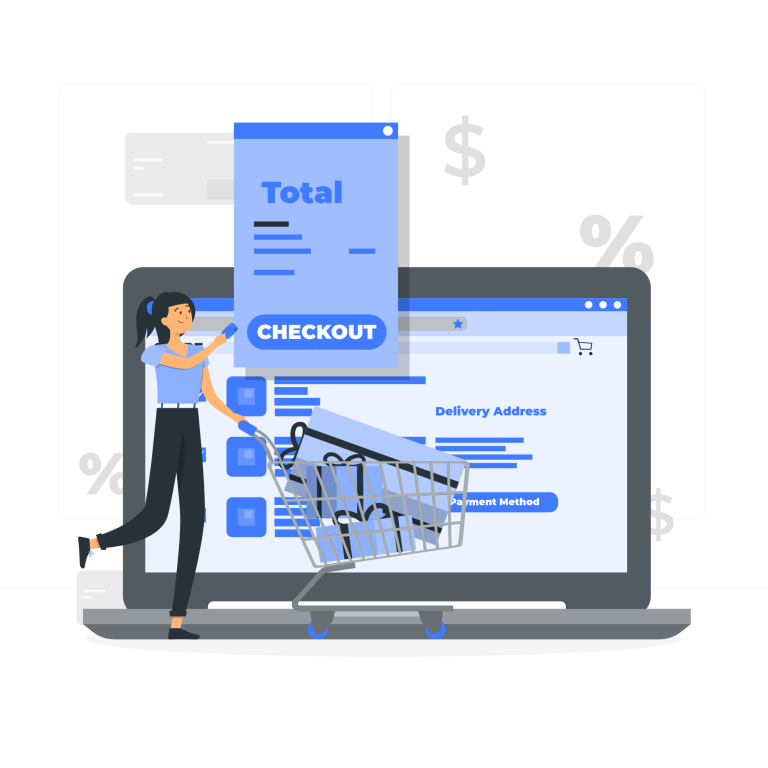Introduction:
In recent years, the world of commerce has undergone a revolutionary transformation with the rise of e-commerce. E-commerce, short for electronic commerce, refers to the buying and selling of goods and services over the internet. This phenomenon has fundamentally changed the way people shop and do business, reshaping the retail landscape and presenting unprecedented opportunities for entrepreneurs and consumers alike. In this blog, we will delve into the fascinating world of e-commerce, exploring its history, the key players, benefits and challenges, as well as its impact on various industries.
1. The Evolution of E-commerce:
The roots of e-commerce can be traced back to the early 1970s when electronic data interchange (EDI) was introduced, enabling businesses to exchange documents electronically. The internet’s development in the 1990s marked a significant turning point for e-commerce, with the first online retail transactions taking place. The subsequent growth of internet infrastructure, secure payment gateways, and technological advancements paved the way for the widespread adoption of e-commerce platforms.
2. Types of E-commerce:
E-commerce encompasses various types of transactions, each tailored to different market segments and consumer preferences:
- Business-to-Consumer (B2C):
- This is the most common form of e-commerce, where businesses sell products or services directly to individual consumers through online platforms.
- Business-to-Business (B2B):
- In B2B e-commerce, businesses sell products or services to other businesses. It involves large-scale transactions and is vital in supply chain management.
- Consumer-to-Consumer (C2C):
- This model enables consumers to sell products or services directly to other consumers through online marketplaces, fostering a peer-to-peer economy.
- Consumer-to-Business (C2B):
- In C2B e-commerce, individual consumers offer products or services to businesses, often through freelancing platforms.
- Business-to-Government (B2G):
- This involves e-commerce transactions between businesses and governmental entities, such as online procurement systems.
3. Key Players in the E-commerce Industry:
The e-commerce landscape is dominated by several major players, each contributing to the industry’s growth and evolution:
- Amazon:
- Founded in 1994, Amazon is a trailblazer in the e-commerce space, offering a vast selection of products, efficient delivery, and a seamless shopping experience.
- Alibaba:
- A Chinese multinational conglomerate, Alibaba operates e-commerce platforms connecting businesses and consumers worldwide.
- eBay:
- One of the earliest online marketplaces, eBay facilitates C2C and B2C transactions, allowing individuals and businesses to buy and sell a wide range of products.
- Shopify:
- A leading e-commerce platform, Shopify empowers businesses of all sizes to create online stores and manage their sales.
- Walmart:
- A retail giant, Walmart has significantly expanded its e-commerce presence in recent years, competing with Amazon head-on.
4. Benefits of E-commerce:
The rise of e-commerce has brought about numerous benefits for businesses, consumers, and society as a whole:
- Global Reach:
- E-commerce enables businesses to reach customers worldwide, transcending geographical boundaries.
- Convenience and Accessibility:
- Online shopping provides 24/7 accessibility and eliminates the need for physical store visits, making it highly convenient for consumers.
- Personalization:
- E-commerce platforms can leverage data analytics to offer personalized product recommendations and targeted marketing, enhancing customer satisfaction.
- Cost Efficiency:
- E-commerce reduces the need for physical storefronts and associated expenses, making it cost-effective for businesses.
- Diverse Product Range:
- Consumers have access to a wide variety of products and services from multiple sellers, providing more choices than traditional retail.
5. Challenges in E-commerce:
Despite its numerous advantages, e-commerce faces various challenges:
- Cybersecurity:
- The risk of data breaches and cyber-attacks is a significant concern for both businesses and consumers.
- Logistics and Fulfillment:
- Efficient supply chain management and timely delivery of products are critical for customer satisfaction.
- Customer Trust:
- Establishing and maintaining trust with customers is essential in the virtual world, where face-to-face interactions are limited.
- Market Competition:
- The e-commerce space is highly competitive, making it challenging for new entrants to carve out a niche.
- Regulatory Compliance:
- Adherence to various regulations and tax laws across different regions poses complexities for businesses operating globally.
6. E-commerce’s Impact on Industries:
E-commerce has had a profound impact on various industries:
- Retail:
- Traditional brick-and-mortar retailers have faced tough competition from e-commerce giants, leading to a shift in consumer preferences and shopping habits.
- Logistics and Delivery:
- The surge in online orders has spurred innovations in last-mile delivery and fulfillment centers.
- Marketing and Advertising:
- Digital marketing strategies have become essential for businesses seeking to establish an online presence and reach their target audience effectively.
- Manufacturing:
- E-commerce has driven changes in manufacturing processes, with businesses adapting to fulfill the demand for online sales.
- Customer Service:
- E-commerce has prompted a focus on enhanced customer service, as positive experiences are crucial for retaining online customers.
Conclusion:
E-commerce has revolutionized the way businesses operate and how consumers shop. With its continued growth, e-commerce is set to shape the future of commerce and redefine the retail landscape. As technology continues to evolve, e-commerce will undoubtedly present new opportunities and challenges, making it an exciting and dynamic industry to watch. Embracing this digital transformation is essential for businesses seeking to thrive in the modern era, while consumers can continue to enjoy the convenience and vast array of choices that e-commerce offers.



